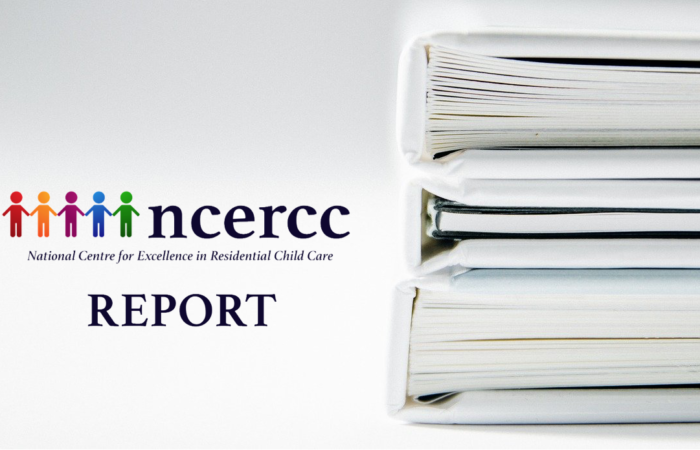
NCERCC response to LGA report
This response raises the requirement for wider and deeper analysis and does not make comment on the involvement of profit in children’s care. It looks at the current role and role and purpose of profit.
The researcher was only commissioned solely to identify and analyse provider profits. The report advises it was ‘regional groups of directors of children’s services that requested that the LGA look at the facts related to profit levels of IFAs and ICHs, at how the owners of those organisations extract value from those organisations, and at risks associated to the financial structures employed that could impact on sufficiency and quality of supply’.
The full picture requires wider and deeper attention. All facts, factors and agents have to be included.
There is more than is included here to be understood about the purpose and function of profit in the current conjuncture, and particularly the active part local authorities have played in its creation.
Policy makers should not make any decisions without all facts, factors and agents being included. Discussion and action based on this one report would be presumptive and pre-emptive, likely to precipitate potentially uncontrollable consequences to the detriment of children’s welfare.
An example of wider and deeper attention is the important finding of the PSSRU that local authority homes on average cost more per place than the independent sector[1]. This finding is confirmed in the work of NCERCC and Revolution Consulting in its recently published research using an FOI of LAs to gather in prices of individual places procured.[2] More local authority homes will eat into finite funding, perhaps with the unintended result of a reduction of placements and/or homes being possible.
Another fact that is commonly not presented is that around two thirds of local authorities have children’s homes of their own. The reverse is often stated, Ofsted registrations present another reality[3].
Clearly local authorities invest in some residential services; these may be short break or other services, not others, maybe those for social, behavioural, mental health needs.
Bringing more factors into the analysis is taking us to different appreciation of the situation.
Continuing to develop and increase the evidence allows observation that the current working of Residential Child Care can be seen as having been created as a necessary redoubt for children’s services; without residential settings children’s services cannot function. We now see the term ‘last resort’, often applied to residential care, there is no current alternative for the most vulnerable children, in a different light.
Applying a historical analysis shows local authorities as actively creating the current situation of independent sector Residential Child Care. It has few characteristics of a market and more of a monopsony of a particular type, where it can be shown local authorities have control of the situation. It is not that local authorities are powerless; they have used their power in a specific way, as have Government. Providers have found ways to accommodate to the requirements placed upon them within tenders and spot purchasing.
Knowing this we also need to bring to this wider and deeper appraisal of the situation an appreciation of the two stages of the development of independent provision.
Initially it provided an extension and specialism.
These later current stages are different; as local authorities must manage their finances as Government reduce their funding. To meet the created monetary reality local authorities have cut early intervention waiting until needs are such that statutory intervention, care status and placement, is necessary.
The use of the independent sector now, and of the emergence of an unregulated and unregistered sector, is a political economic reactive measure to cope with the nudge of austerity, to keep children’s services functioning. Children’s homes have proven to be a resilient part of children’s services, sustaining its quality of care according to Ofsted inspection outcomes
In this circumstance one way of seeing profit is as an enabler. It enables the providers to secure finance for provision, and it enables the local authorities to use available provision.
This insight is important to be understood as the report considers some methods for curbing profit.
Taking into account the above it is plain that in the current situation the repercussions of curbing children’s homes providers profit could be to disable the whole system by reducing even the low residential provision we have today.
How can this be? The report contains data concerning the profits. However, for providers, the issue is not only of profit but also of debt. Calculations show the £1 million to open a home is unlikely to be paid off by turnover. Most providers will only have a return on investment on a sale.
Curbing profit is likely to reduce attractiveness to invest. It may remove investors’ willingness to continue existing loans. The Children’s Commissioner has proposed government funding to local authorities to open homes as an intentional disruption to ‘reset the market.’ Before doing so it is incumbent on all involved with policy to consider all of the eventualities. Things do not always turn out as they are proposed. More homes means less occupancy and this is a crucial feature in the viability of homes. There is the important matter of the knowledgeable, trained and experienced workforce, care, educational and health professions necessary to meet complex needs. This is a necessary additional factor that has to be addressed by a strategy. It is not only a matter of financing homes but also the development of the workforce that requires a government strategy and investment
For providers the objective impossibility of paying off the debt may heighten factors such as stress or morale, especially of the near half of homes run by providers with one or two homes only, and kept going by family or others working long hours for low or no remuneration. Providers may conclude it is better to sell, or close.
Raising solvency levels or owner guarantees need to be examined to ascertain if they are likely to be deterrents to involvement or continuation.
The report notes, ‘There is further evidence from the children’s homes sector that a third tier of even smaller providers than any of those included in this study are experiencing lower percentage profit levels, and only 30% are reporting any growth in profitability’. [4]
It has to be observed that the figures in the report stem from a situation where there is a confidence in the future, that what is happening now will carry on. Any shaking of confidence will bring a different picture. Finance is cautious in an investment, and continuously seeks better returns. It may take little for the current investment to go elsewhere.
There may be an assumption that if private providers close local authorities will step into run homes. This power only exists for adult social care. There is no backstop.
With additional information we are a long way from a narrative being solely about provider profits.
There are diverse ways the report can be read. Certainly one of them is that the report represents a particular insight into some last frantic gasps of a system that is underfunded. Care is needed in making any moves. The children’s care system cannot be cannoned from critical to crisis.
A new methodology for the funding of children’s social care is a focus of current attention, it may be a focus for the forthcoming care review. The gap between the idea and its creation is still large, the complexity of financing is likely to be made visible in any transparency requirement such as open book accounting. The situation requires sophisticated thinking through involving the very few experts that exist in this area, one of whom is the author of the report for the LGA. Meanwhile the current situation has to be continued, whilst a carefully managed transition is secured.
[1] https://www.pssru.ac.uk/pub/uc/uc2018/community-based-social-care-staff.pdf
[2] http://www.revolution-consulting.org/wp-content/uploads/2020/02/FoI-price-report-final-16-Feb-2020-1.pdf
[3] https://www.gov.uk/government/publications/childrens-social-care-data-in-england-2019/childrens-social-care-in-england-2019#childrens-homes
[4] ICHA State of the sector survey 2019. See also State of the sector 2020 for continuation of this factor. www.icha.org.uk


